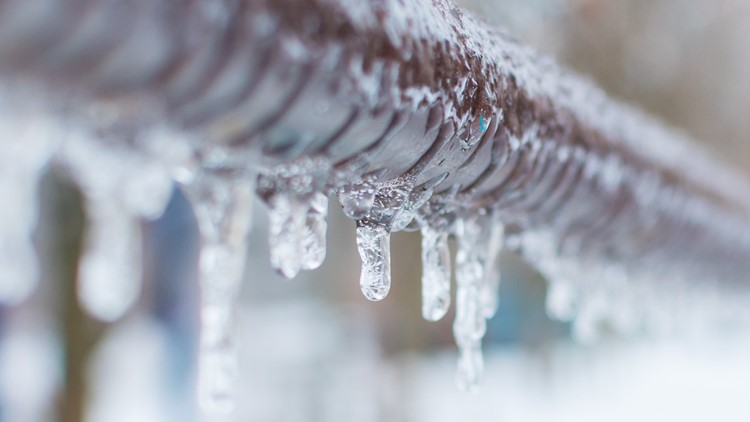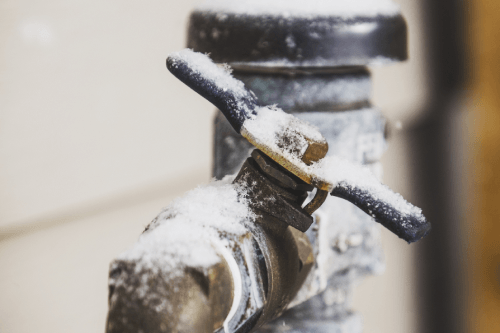Protecting Your Pipes from Cold Weather: Effective Methods
Protecting Your Pipes from Cold Weather: Effective Methods
Blog Article
Any individual maintains their own piece of advice in relation to How To Avoid Freezing Pipes.

Cold weather can wreak havoc on your plumbing, specifically by freezing pipelines. Here's just how to avoid it from happening and what to do if it does.
Introduction
As temperature levels decrease, the threat of icy pipelines boosts, potentially bring about expensive repair services and water damage. Comprehending exactly how to stop frozen pipelines is vital for property owners in cold environments.
Comprehending Frozen Pipelines
What causes pipes to freeze?
Pipes ice up when subjected to temperatures below 32 ° F (0 ° C) for expanded periods. As water inside the pipes freezes, it expands, putting pressure on the pipeline wall surfaces and possibly triggering them to burst.
Threats and damages
Icy pipes can result in supply of water disturbances, home damages, and pricey repairs. Burst pipelines can flood homes and create considerable architectural damage.
Signs of Frozen Piping
Recognizing frozen pipes early can avoid them from bursting.
Exactly how to determine icy pipes
Search for decreased water flow from taps, uncommon odors or noises from pipes, and visible frost on exposed pipelines.
Prevention Tips
Protecting at risk pipelines
Cover pipes in insulation sleeves or make use of heat tape to secure them from freezing temperature levels. Focus on pipelines in unheated or outside locations of the home.
Home heating strategies
Maintain indoor areas adequately heated, particularly areas with plumbing. Open up cabinet doors to enable cozy air to distribute around pipelines under sinks.
Shielding Outdoor Pipes
Garden pipes and outside taps
Separate and drain pipes yard pipes prior to winter. Install frost-proof faucets or cover exterior taps with shielded caps.
What to Do If Your Pipelines Freeze
Immediate activities to take
If you presume frozen pipelines, keep taps available to ease stress as the ice melts. Utilize a hairdryer or towels soaked in hot water to thaw pipelines slowly.
Long-Term Solutions
Architectural changes
Consider rerouting pipelines away from exterior walls or unheated areas. Include added insulation to attic rooms, basements, and crawl spaces.
Upgrading insulation
Purchase top quality insulation for pipelines, attics, and wall surfaces. Correct insulation aids maintain constant temperature levels and lowers the risk of frozen pipes.
Conclusion
Stopping frozen pipes calls for aggressive procedures and fast reactions. By comprehending the causes, indicators, and preventive measures, homeowners can shield their pipes during winter.
5 Ways to Prevent Frozen Pipes
Drain Outdoor Faucets and Disconnect Hoses
First, close the shut-off valve that controls the flow of water in the pipe to your outdoor faucet. Then, head outside to disconnect and drain your hose and open the outdoor faucet to allow the water to completely drain out of the line. Turn off the faucet when done. Finally, head back to the shut-off valve and drain the remaining water inside the pipe into a bucket or container. Additionally, if you have a home irrigation system, you should consider hiring an expert to clear the system of water each year.
Insulate Pipes
One of the best and most cost-effective methods for preventing frozen water pipes is to wrap your pipes with insulation. This is especially important for areas in your home that aren’t exposed to heat, such as an attic. We suggest using foam sleeves, which can typically be found at your local hardware store.
Keep Heat Running at 65
Your pipes are located inside your walls, and the temperature there is much colder than the rest of the house. To prevent your pipes from freezing, The Insurance Information Institute suggests that you keep your home heated to at least 65 degrees, even when traveling. You may want to invest in smart devices that can keep an eye on the temperature in your home while you’re away.
Leave Water Dripping
Moving water — even a small trickle — can prevent ice from forming inside your pipes. When freezing temps are imminent, start a drip of water from all faucets that serve exposed pipes. Leaving a few faucets running will also help relieve pressure inside the pipes and help prevent a rupture if the water inside freezes.
Open Cupboard Doors
Warm your kitchen and bathroom pipes by opening cupboards and vanities. You should also leave your interior doors ajar to help warm air circulate evenly throughout your home.

I discovered that piece of writing on How to Prevent Your Pipes From Freezing while doing a lookup on the web. Appreciated our piece of writing? Please share it. Let another person discover it. I enjoy your readership.
Source Report this page